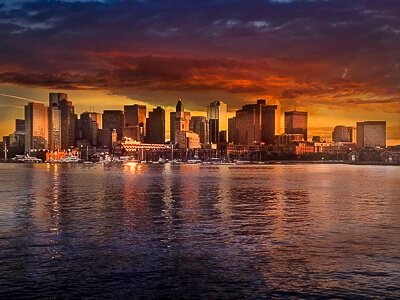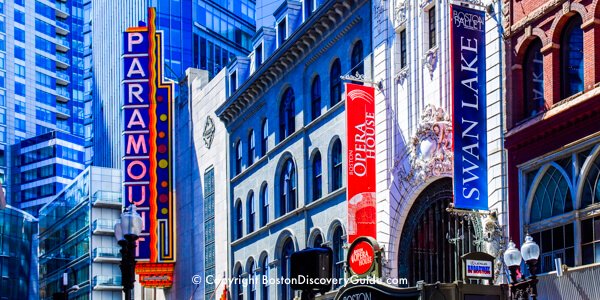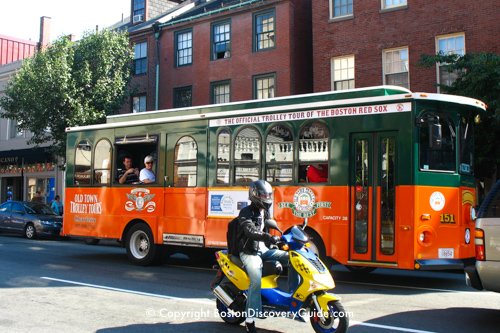Even if the Boston Holocaust Memorial isn't on your bucket list of places to visit, you may spot it as you walk along a nearby section of the Freedom Trail, stop for coffee and a lobster roll or donut at Boston Public Market, or walk out one of the many pubs along Congress and Union Street.
Should you walk over for a close-up view? Absolutely!
The Holocaust Memorial's six glass towers soar toward the sky along a black granite path bordered by a narrow ribbon of green grass near the Freedom Trail.
Walk among the haunting yet compelling towers, and you'll see their messages about persecution and liberty, genocide and human rights, death and survival, despair and hope.
Boston area survivors of Nazi concentration camps led the effort to create the Boston Holocaust Memorial (officially called the "New England Holocaust Memorial") and eventually, support and sponsorship from more than 3,000 individuals and organizations brought it to life.
Completed in 1995, the Memorial is dedicated to the memory of the 6 million Jewish men, women, and children - more than half the Jewish population of Europe at that time - as well as the other 5 million people killed by the Nazis before Allied nations defeated them in 1945.
Top Photo: The Holocaust Memorial's six etched-glass towers, (c) Boston Discovery Guide
Boston Discovery Guide is a reader-supported publication. When you buy through our links, we may earn a commission at no additional cost for you. Learn more
What to Expect at the Holocaust Memorial
Architect Stanley Saitowitz designed the Boston Holocaust Memorial, mixing symbolism and metaphor with the literalness of concrete words.
Each glass tower stands 54 feet high. Lighting from within causes them to shimmer in daylight and glow at night.
At a distance, the towers look ethereal and transparent. Up close, they seem rugged and almost opaque. You become more aware of the strong steel frames.
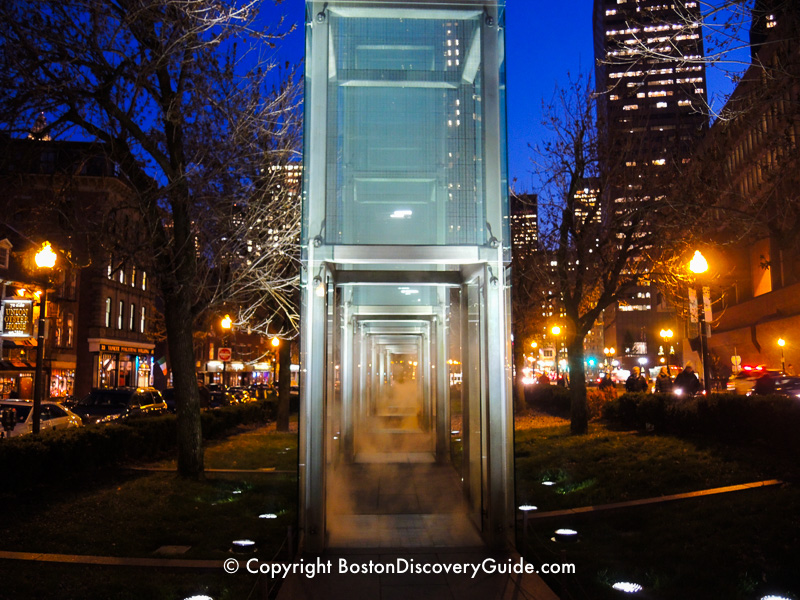
As you walk along the black granite path, you will see people put their hands up to the glass, as though they don't quite trust that it is really there.
To the north and the west, Boston's Government Center buildings loom as an interesting visual backdrop to the Memorial.
Built in the 1960s in the Brutalism architectural style and featuring rough concrete block shapes as the major design element, these massive and rather menacing buildings grate against the rest of the city's architecture.
The Memorial's rectangular glass panels frame the buildings, and strangely soften them.
Each of the six towers represents a major Nazi death camp: Majdanek, Chelmno, Sobibor, Treblinka, Belzec, and Auschwitz-Birkenau.
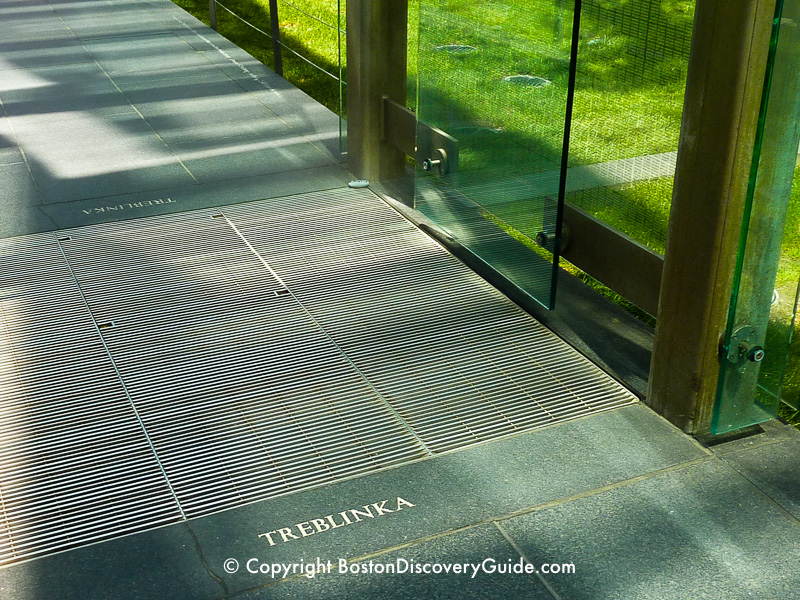
At the base of each tower, a grate lies over a 6-foot square pit with warm steam rising from coals that smolder at the bottom.
Look carefully, and you can see the flickering coals illuminate the name of the death camp that the tower represents.
At at distance, the glass panes of the towers seem transparent, but up close, they appear slightly frosted. Look closely, and you will realize the frosting is actually a blanket of etched numbers - 6 million random numbers in all, representing the six million Jews exterminated in the Nazi camps.
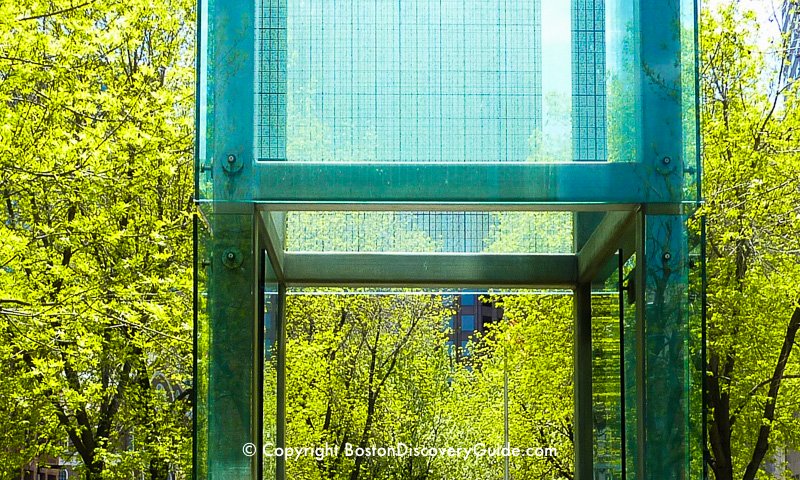
These random numbers symbolize the registration numbers forcibly tattooed on the Jews when they were brought to the death camps.
Each tiny set of numbers carved in the glass represents a person murdered in the camps, and the numbers cover all the panels on all the towers - if you step back enough to see all the towers at once, you can see the magnitude of the loss of life.
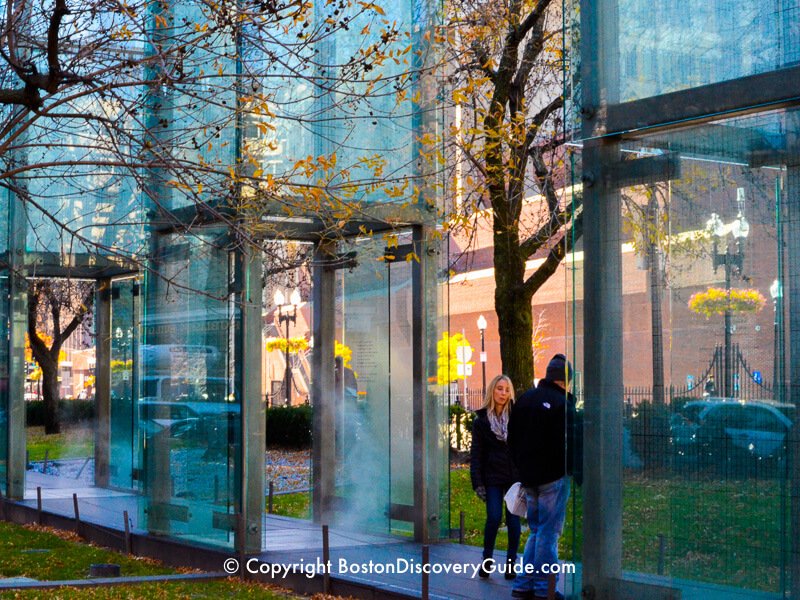
Does the initial frosting effect symbolize the tendency of our collective memory to grow hazy over time? The Holocaust Memorial is about remembrance. Each number reminds us to remember.
Along the bottom of the glass towers are etched statements about life in the camps from the survivors.
You can also see facts about the Holocaust engraved along the edging of the path between the towers. You will learn, for example, that the Nazis murdered as many as one and a half million Jewish infants and children.
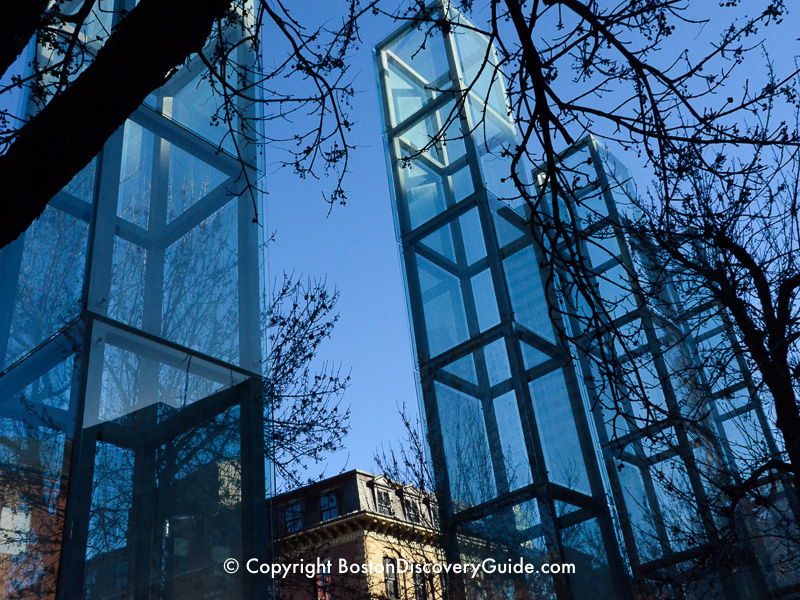
At the entrance on the Faneuil Hall side of the Boston Holocaust Memorial is a large black granite cube etched with the key historical events leading to the Nazis' rise to power in 1933 until their defeat in 1945.
The word "Remember" is carved in English and Hebrew in the pathway at the beginning of the towers, and again at the end.
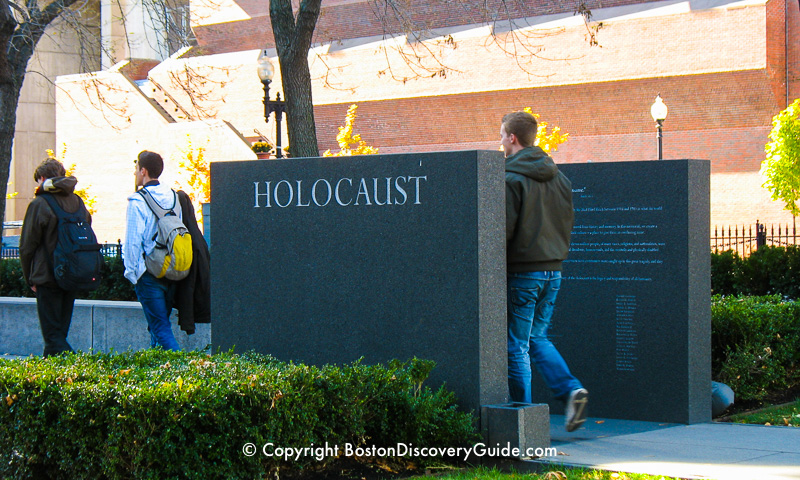
"Holocaust" and in Hebrew, "Shoah," are engraved in black granite.
Between the two granite blocks is buried a time capsule containing the names of New Englanders' family members who were killed by the Nazis in the camps.
The Memorial is stunning and moving. When you're walking through and under the towers, you become so caught up in the experience that you forget that you are in a busy part of the city.
Flanked by touristy Faneuil Hall Marketplace, historic taverns, and looming Government Center buildings and high-rise condos, the location seems strange at first.
But the red stripe of the Freedom Trail can be seen nearby, linking the Memorial to earlier Revolutionary War sites commemorating the fight for liberty and human rights.
This gripping memorial causes us all to pause and think about the deadly impact of prejudice, hatred, and bigotry, and the importance of speaking out whenever we encounter them.
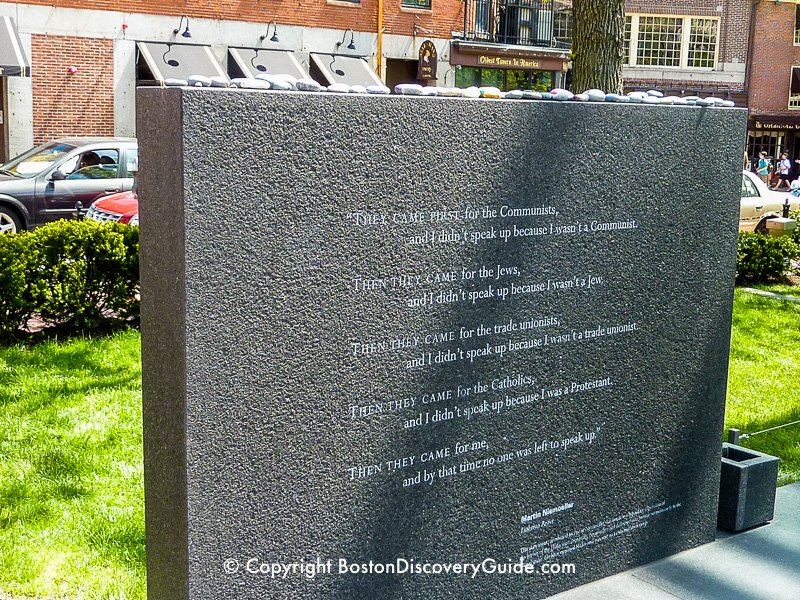
Details and Directions for the Holocaust Memorial
Location: Between Congress and Union Streets near Faneuil Hall, on Boston's Freedom Trail.
Hours: You can visit this outdoor memorial at any time
Nearest T station: Blue and Green Lines/Government Center; Green and Orange Lines/Haymarket; Blue and Orange Lines/State
Parking: Garages near North End attractions, Government Center, and Faneuil Hall
For more information: 617-457-8755; website
In memoriam
This page is dedicated to the memory of Dr. Tibor T. Polgar, b. 1943 Szolnok labor camp, d. 1985 America; and to the memory of his mother, Rose Polgar, and to his father and his sister who were murdered by Nazis at Szolnok.
Ad perpetuam memoriam
More Articles about Places to Visit near the Holocaust Memorial
- Boston's Freedom Trail - Find more sites to visit on Boston's famous Walk through History
- Beacon Hill - Explore the nearby historic neighborhood where Vilna Shul, Boston's last remaining immigrant synagogue is located
- Historic Downtown Boston - Find out more about Boston's historic core
- Boston's Historic Taverns - Several are across the street from the Holocaust Memorial
- More Boston Museums & Memorials
Need a Boston Hotel or Apartment?
Use this handy map from Booking.com to find the perfect place to stay. Just enter your dates to find what's available, see the best rates, and make your reservations.


